Amazon’s new Kindle is crazy small and comes at a crazy price
If you’ve ever used one of Amazon’s Kindle e-book readers, then you can get by with a really short review of its latest, the Kindle Oasis.
It’s exactly like the other recent models in most regards. (My video here should bring you up to date on the primary Kindle features.) It has the same six-inch, black-and-white, 300-dots-per-inch e-ink screen. This screen comes incredibly close to the look of print on paper, looks amazing in sunlight (where color screens usually wash out), and, in darkness, has its own adjustable soft backlight.
The Oasis holds thousands of books. You can buy new ones from Amazon whenever you’re in a WiFi hotspot — or, for $70 more, the truly obsessive reader may prefer the Oasis with a built-in cellular modem.

The Oasis differs only in a few aspects from previous Kindles. One long edge is weirdly bulbous and widened, making the Oasis more of a square than a rectangle. That’s where the battery is, as well as page-turn buttons, and that’s what you hold onto as you read.
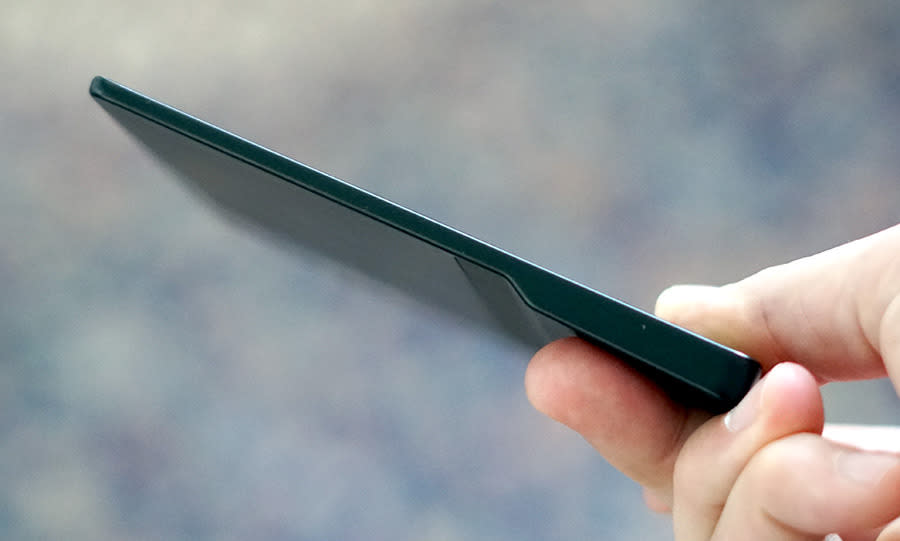
The screen image, and the functions of the Next Page/Previous Page buttons, flip upside-down if you hold the fat side with the other hand:
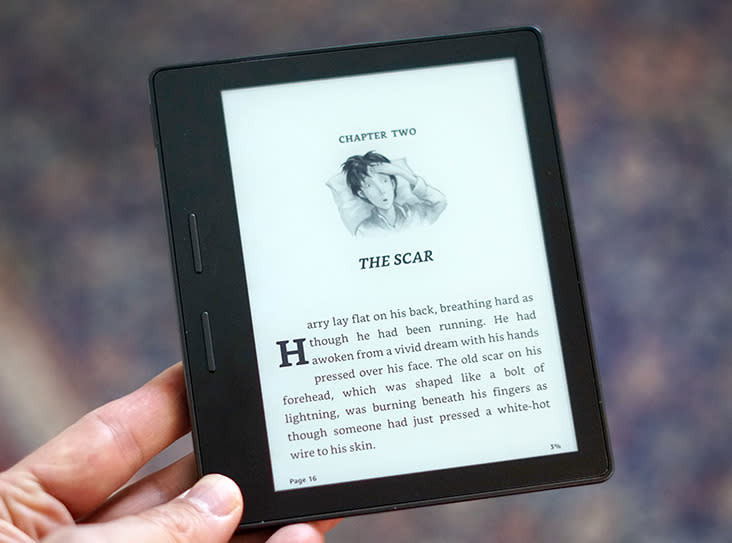
The whole thing, overall, is much smaller than other Kindles. In fact, even though it’s a little wider, it still just barely fits into an inside blazer pocket.
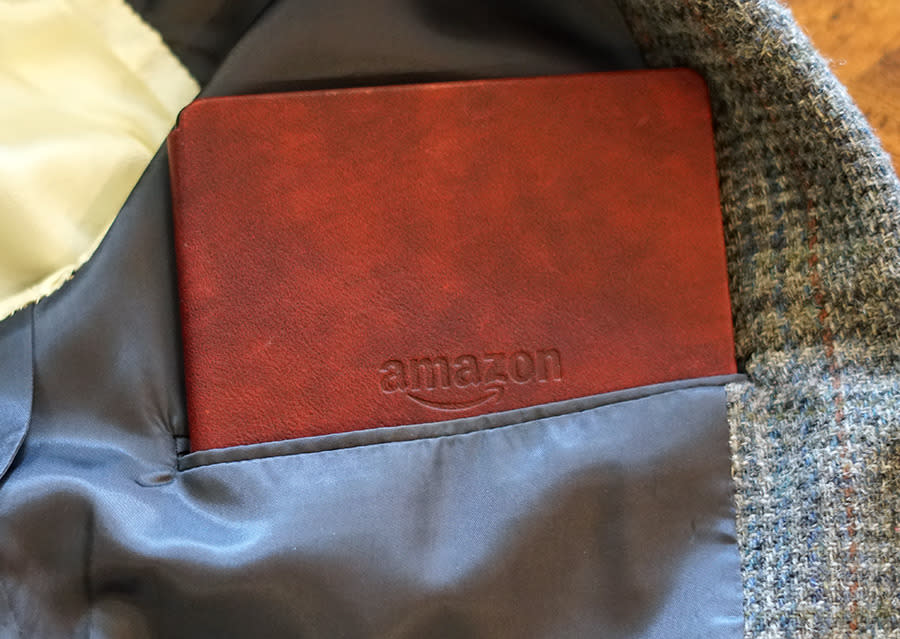
The Oasis weighs less than any other Kindle (4.6 ounces instead of 6.3 or 7.2 ounces, like the other Kindles). The backlight is a little more even.
Other differences: A magnetically attached leather screen cover comes with this Kindle. When you’re reading, it can fold around completely behind the Kindle.
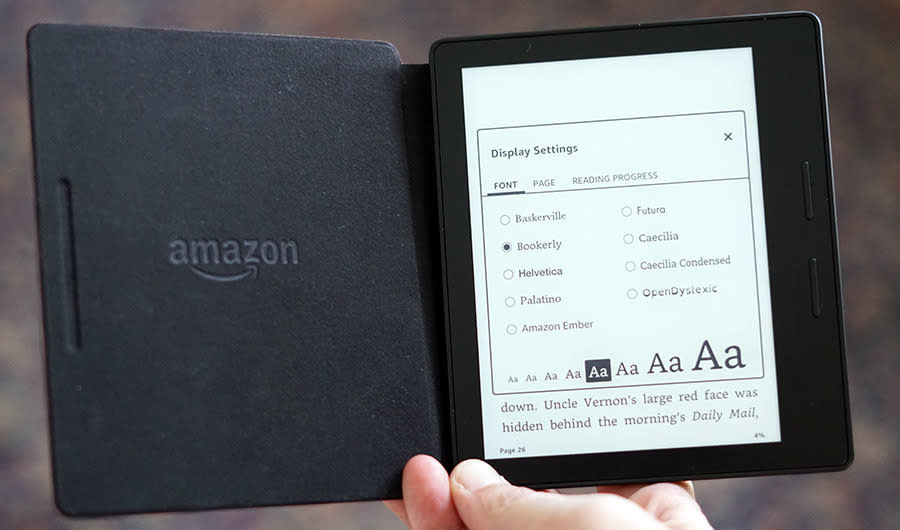
The cover itself contains a second battery; between the two, you should be able to go months without recharging.

Oh, and there’s one more thing that’s changed: The price. The Oasis costs $310 (or $290 if you’re willing to look at ads on the screen saver).
What the—?
For about that money, you could buy four regular Kindles. Or 2.4 of the Kindle Paperwhite, which has exactly the same illuminated touch screen but not the bulbous edge and screen cover.
What was Amazon thinking? And what should you think?
The value proposition
Apart from its thick sidebar, the Oasis’s body is incredibly thin. That light weight really means something; it feels glorious to read for long periods. Amazon has said it won’t quit until it’s made a Kindle that’s as thin and light as a piece of paper, and the Oasis represents a pleasing step in that direction.
So, given that the screen itself hasn’t changed, how much is the thinner, lighter body worth? Let’s say it could justify adding about $20 to the cost.
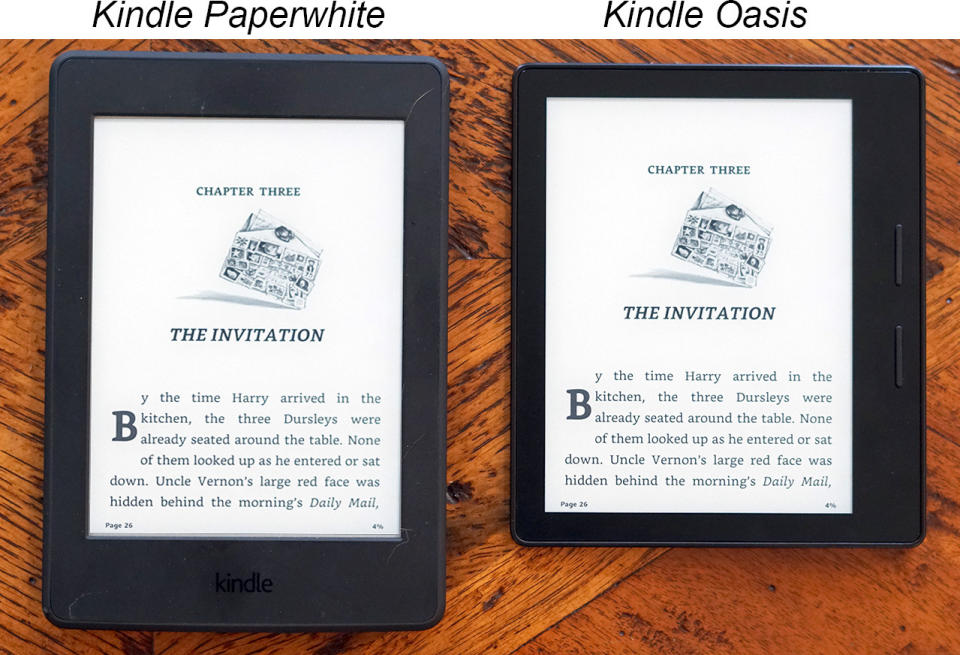
The leather battery-cover thing is ingeniously designed, and it charges simultaneously with the Kindle. It’s nice to go an entire season without having to charge your gadget. Of course, the dirty little secret is the cover instantly erases the Oasis’s advantages of thickness and weight; the resulting package is actually thicker and heavier than any other Kindle (8.4 ounces total).
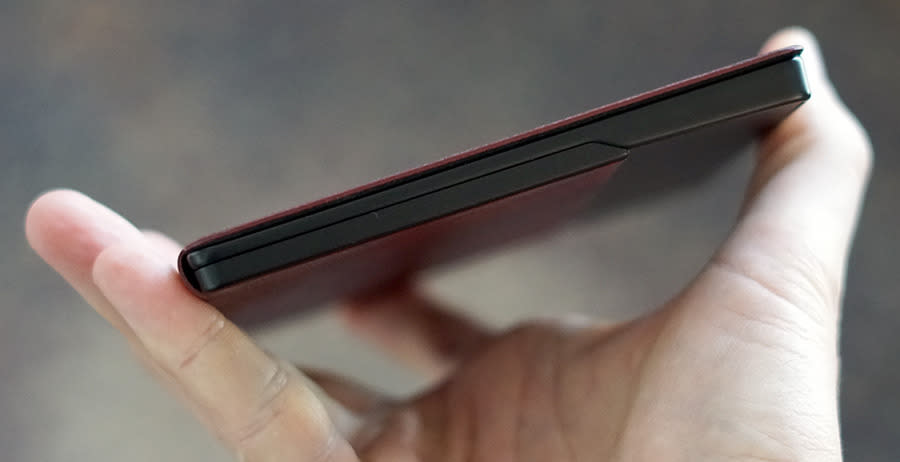
The other elephant in the room is that without the cover, this Kindle has shorter battery life than its predecessors (a couple of weeks, depending on how much you read).
But since the cover easily pops on or off, and it’s nice to have, let’s say the cover feature adds another $40 to the value.
The backlighting on the Oasis comes from 10 hidden LEDs around the edges instead of four or six, as on the other light-up Kindles. That’s good for a $10 price boost at least.
So yeah, the Oasis is the best Kindle you can buy. The improvements would be worth paying about $70 for (versus the otherwise identical Paperwhite). Bottom line: The Oasis should cost $190.
So what accounts for the remaining $100 price hike?
The Oasis psychology
The answer has nothing to do with hardware or software. It’s about psychology.
There are, let’s admit it, rich people in the world. They buy the best and don’t sweat the cost. That’s why there are absurdly overpriced cars, restaurants and bottles of wine. That’s why there’s First Class on airplanes. That’s why there’s a $10,000 Apple Watch and a $40,000 Vertu phone. If you build it, some will come.
Meanwhile, of course, high-end tech experiments like the Oasis introduce new technologies that will inevitably trickle down into the mainstream models. These products often constitute a proving ground for the manufacturer.
And, of course, Amazon can always lower the price of a Kindle later in its product lifecycle; it always does.
One more thing: It occurs to me the Oasis is coming out right at Father’s Day/graduation season. A lot of people give Kindles as gifts. And if it’s your firstborn child heading off to college, or if you’re honoring a loving father who taught you about life, you might consider an $80 Kindle too cheap a present. You might spring for top-of-the-line just to show how much you care. Amazon won’t mind a bit.
In that regard, you get what you pay for; it’s hard to call the Oasis a ripoff. It’s an overpriced luxury, yes, but you know that going in. Nobody’s pretending otherwise.
David Pogue is the founder of Yahoo Tech; here’s how to get his columns by email. On the Web, he’s davidpogue.com. On Twitter, he’s @pogue. On email, he’s poguester@yahoo.com. He welcomes non-toxic comments in the Comments below.

